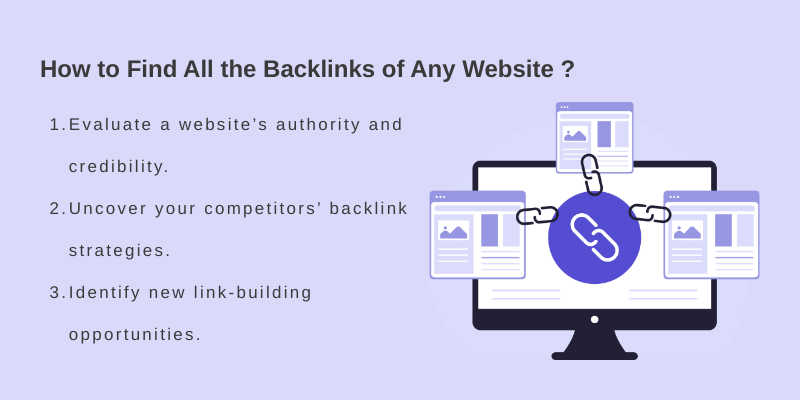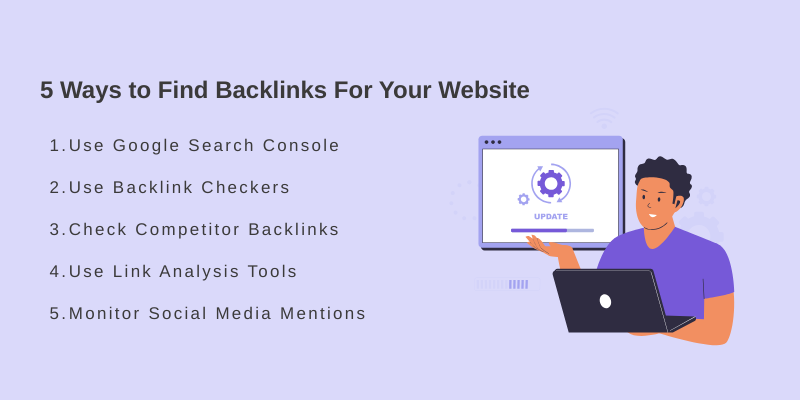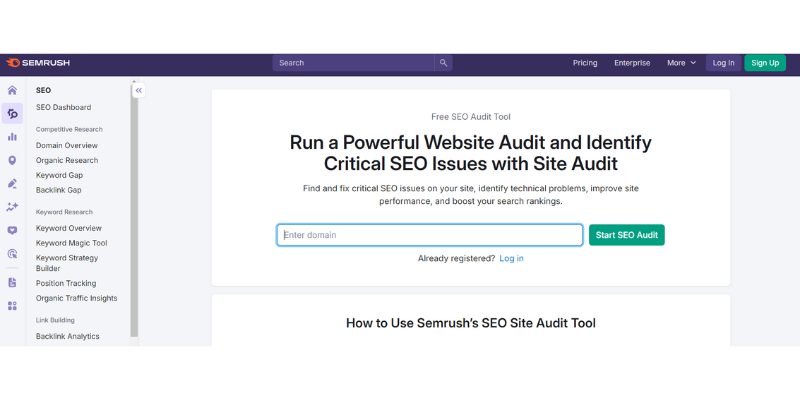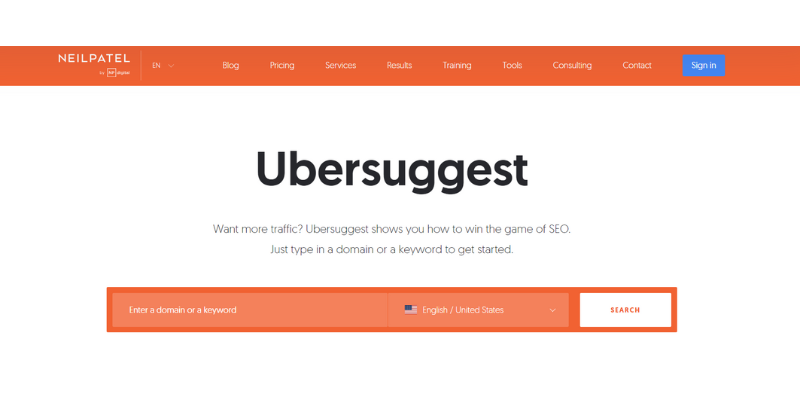Backlinks are a key part of any SEO strategy, contributing to enhance a website's search engine ranking and authority.
Curious about how to find backlinks?
These are links from external websites that point to your content, signaling to search engines that your website is a trusted source of information.
The more high-quality backlinks your site accumulates, the more likely it is to rank higher on top search engines and search engine results pages (SERPs).
Finding backlinks involves identifying who is linking to your website, understanding the quality of these backlinks, and uncovering new opportunities for acquiring more links.
The process can be done manually or by using specialized SEO tools that provide in-depth analysis of your website’s link profile.
Additionally, discovering and monitoring backlinks can also help identify potentially harmful links that might hurt your SEO performance, allowing you to take corrective actions.
In this blog, we’ll explore different methods and tools to help you find backlinks effectively. Learn how identifying backlinks can elevate your SEO efforts and drive organic traffic to your website.
How to Find All the Backlinks of Any Website?
Backlinks act as votes of trust in SEO, each link to your website signals to search engines that your content is valuable and credible. Analyzing backlinks helps you evaluate your site’s authority, find link-building opportunities with advanced link building techniques, and strengthen your SEO strategy.

Analyzing backlinks helps you evaluate your site’s authority, find link-building opportunities, and strengthen your SEO strategy.
Evaluate a website’s authority and credibility
Backlinks signal to search engines that a site’s content is valuable and trustworthy. The more high-quality backlinks a website earns, the stronger its reputation becomes in search results.
Uncover your competitors’ backlink strategies
Studying their link sources and the content that attracts those links helps you understand what works for them and where you might improve or compete.
Identify new link-building opportunities
By exploring the backlink profiles of other websites in your niche, you can find relevant outreach prospects and build relationships that strengthen your own backlink profile.
However, not all backlinks help your SEO. Focus on links from reputable, relevant websites. Backlinks from spammy or irrelevant sources can harm rankings rather than improve them.
5 Ways to Find Backlinks For Your Website
Finding backlinks is crucial for improving your website's SEO performance. Here are several methods to help you discover valuable backlinks:

1. Use Google Search Console
Google Search Console provides a comprehensive overview of your website's backlinks. By accessing the "Links" report, you can see the sites linking to your pages and monitor your backlink profile. It’s an easy and free way to identify how other websites are connecting to your content, helping you spot valuable backlinks.
2. Use Backlink Checkers (Ahrefs, SEMrush, Moz)
Ahrefs, SEMrush, and Moz are powerful tools that allow you to conduct in-depth backlink analysis. These best SEO reporting softwares and tools provide detailed insights into the backlinks pointing to your website, helping you assess the quality and quantity of these links. They also allow you to track your competitors' backlinks, which can offer valuable opportunities for your own link-building efforts.
3. Check Competitor Backlinks
A great way to understand how to find backlinks is by analyzing your competitors’ backlink profiles. Tools like Ahrefs and SEMrush enable you to see which websites are linking to your competitors. By studying their backlink strategies, you can identify opportunities for acquiring similar links, boosting your own SEO efforts.
4. Use Link Analysis Tools
Link analysis tools provide insights into your backlink profile, including the strength and health of each backlink. These SEO ranking report software, such as Majestic or Google Analytics, help track how links are impacting your website’s performance and identify potential toxic backlinks that need to be removed.
5. Monitor Social Media Mentions
Social media can be an excellent source for backlinks. By monitoring mentions of your brand, product, or website on platforms like Twitter, Facebook, or LinkedIn, you can find instances where your content is being shared or linked to. Tools like BuzzSumo or Mention allow you to track social media activity and identify new backlink opportunities.
4 Most Commonly Used Backlink Analysis Tools
Backlink analysis tools provide valuable insights into the quality and source of links pointing to your site, helping you optimize your link-building strategy.
Here are some of the most popular tools to help you find and analyze backlinks:
1. Ahrefs

Ahrefs is one of the most comprehensive tools for how to find backlinks. It allows you to explore detailed backlink profiles, including the referring domains, anchor texts, and link strength.
With Ahrefs' Site Explorer, you can track your backlinks over time, monitor your competitors' backlinks, and discover new link-building opportunities by analyzing competitor sites.
2. Moz

Moz offers the Link Explorer tool, which is designed to help you find backlinks and analyze their value.
Moz’s Domain Authority (DA) and Page Authority (PA) scores are helpful for evaluating the quality of the backlinks and understanding how they influence your rankings.
This tool is great for finding how to find backlinks from high-authority domains and determining if any of your links are potentially harmful.
3. SEMrush

SEMrush is a powerful SEO platform with a Backlink Analytics tool that allows you to analyze backlinks and evaluate the quality of each one.
With SEMrush’s Backlink Audit tool, you can identify low-quality or toxic backlinks and discover how to find backlinks from authoritative sources.
SEMrush also lets you analyze your competitors' backlink profiles, providing new insights for your link-building strategy.
4. Ubersuggest

Ubersuggest is an easy-to-use, budget-friendly tool for how to find backlinks and analyze their impact. It provides detailed reports on referring domains, backlink types, and anchor texts. Ubersuggest is one of the best SEO tools for small businesses and also offers insights into your competitors’ backlink profiles, making it easier to discover new backlink opportunities.
Ubersuggest also offers insights into your competitors’ backlink profiles, making it easier to discover new backlink opportunities. This tool is perfect for beginners or small businesses looking for an affordable option to track backlinks and improve their SEO.
Competitor Backlink Analysis: How to Find Backlinks by Analyzing Competitors' Profiles?
Analyzing your competitors’ backlink profiles is an effective strategy for discovering how to find backlinks and improving your own SEO marketing efforts.

By identifying where your competitors are getting their backlinks from, you can uncover valuable opportunities and strategies to boost your own site’s ranking.
Here's how to go about it:
1. Identify Your Competitors
The first step in competitor backlink analysis is to identify who your main competitors are. These are the websites that rank higher than you for your target keywords or are in direct competition within your industry. Use Google Search or tools like SEMrush and Ahrefs to discover which websites are ranking for the same terms.
2. Use Backlink Analysis Tools
Tools like Ahrefs, SEMrush, Moz, and Ubersuggest allow you to input a competitor's website URL and analyze their backlinks. These tools provide a detailed breakdown of the backlinks pointing to your competitor’s site, including referring domains, anchor texts, and link strength. You can use these insights to identify where your competitors are getting their backlinks and which sources are most valuable.
3. Evaluate the Quality of Competitor Backlinks
It’s important not just to know where your competitors' backlinks are coming from, but also to assess the quality of those backlinks. Look for high-authority domains, such as industry blogs, news outlets, and educational websites. High-quality backlinks from trusted websites are much more valuable for SEO than links from low-authority or spammy sites.
4. Identify Link-Building Opportunities
Once you know where your competitors’ backlinks are coming from, look for opportunities to acquire similar links. For example, if a competitor has gained a backlink from a high-authority blog, consider reaching out to that blog to pitch your content. Alternatively, if your competitor’s backlinks come from guest posts, you could aim to secure your own guest blogging opportunities.
5. Track Competitor Backlink Growth
Regularly monitor your competitors’ backlinks to stay updated on their link-building efforts. Tools like Ahrefs and SEMrush allow you to track the growth of backlinks over time. By observing new backlinks that competitors are acquiring, you can stay on top of trends and adjust your own strategy accordingly.
Get Your Free SEO Audit Report Today!
How to Interpret Backlink Data?
Understanding backlinks is just the first step; the next crucial part is learning how to interpret backlink data effectively.
Evaluating the quality of your backlinks helps determine whether they’re strengthening or weakening your SEO performance.
Several key metrics can help you assess the value of your backlinks:
1. Domain Authority (DA)
Developed by Moz, Domain Authority measures the overall strength and credibility of a website on a scale from 1 to 100. A higher DA score indicates that the website is more authoritative and trustworthy in the eyes of search engines. When analyzing backlinks, links from high-DA websites carry more weight and can significantly boost your website’s ranking potential, especially when integrated with the use of best AI SEO software.
2. Page Authority (PA)
Also introduced by Moz, Page Authority measures the ranking strength of an individual webpage rather than the entire domain. A page with a higher PA is considered more influential and likely to rank better in search engine results. Backlinks from high-PA pages are especially valuable because they directly impact the specific page’s relevance and SEO power.
3. Trust Flow (TF)
Created by Majestic, Trust Flow evaluates the trustworthiness of a website based on the quality of links pointing to it. A higher Trust Flow means the site has backlinks from other trustworthy and reputable sources. This metric helps identify whether a backlink is genuinely valuable or potentially harmful.
Why Low-Quality Backlinks Can Harm SEO?
Not all backlinks help your website, in fact, some can damage it. Low-quality backlinks come from spammy, irrelevant, or untrustworthy sources often linked to unrelated niches, such as oil and gas marketing agency websites, which search engines see as signals of manipulation rather than credibility.
When your site is linked from such sources, it can:
- Lower your rankings: Google’s algorithms, especially Penguin, penalize sites associated with unnatural or spammy links.
- Reduce trust and authority: Backlinks from poor-quality or irrelevant domains make your website appear less reliable.
- Trigger manual penalties: If Google detects link schemes or paid links, your site may face manual action that reduces visibility.
- Skew your backlink profile: Too many irrelevant or duplicated links can make your backlink profile look unnatural.
To protect your SEO, regularly audit your backlinks using tools like Google Search Console or SE Ranking. Remove or disavow harmful links, and focus on building high-quality, relevant backlinks that strengthen your site’s reputation and search performance.
Conclusion
What are backlinks and how to find backlinks are essential questions let, now summrize this so, anyone looking to improve their SEO strategy. Backlinks play an essential role in signaling trust and authority to search engines, which directly impacts your website's ranking. For example, digital transformation agencies like Centric often emphasize the importance of maintaining a robust backlink profile to enhance overall digital presence. Finding and analyzing backlinks helps you identify high-quality links and remove any harmful ones that could damage your SEO efforts.
By regularly auditing your backlinks and using tools to discover new ones, you can maintain a strong backlink profile. Additionally, analyzing competitor backlinks can provide valuable insights and opportunities to enhance your own link-building strategy. Ultimately, understanding how to find backlinks and managing them effectively leads to improved search engine visibility, higher organic traffic, and sustained SEO success.








